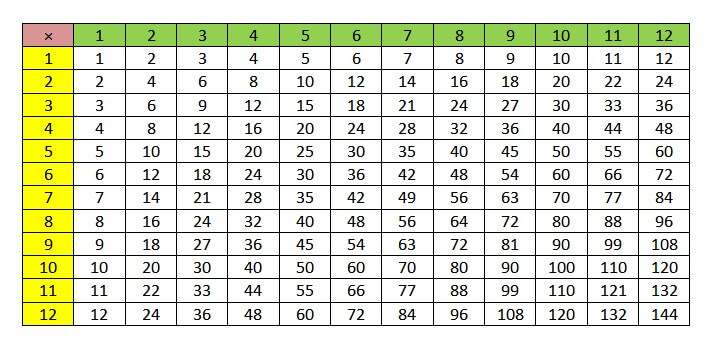Introduction:
Teaching methods and strategies change all the time. We should know: At School-Kits.com we try to stay ahead and bring you these new strategies in easy-to-follow guides.
I believe though that some practices stand the test of time, proving their efficacy in shaping young minds. One such cornerstone of mathematical education is the repetition of times tables in the classroom. While some might perceive it as a traditional approach, the enduring impact it has on students’ mathematical fluency and problem-solving skills is undeniable.
In my time in the early 70s, we would read aloud a chosen times table at the start of each class (for example, six multiplied from 0 to 12). The teacher would then walk around the class, slap his cane on the desk of a student and command that student to call out the answer to a random multiplication!
Yes, times have changed but repetition is still an important method. Let’s take a look into the timeless benefits of this practice and how it sets the stage for long-term success.
Building a Strong Mathematical Foundation:
- Automatic Recall and Speed:
- The foundation of mathematical proficiency lies in the ability to recall basic multiplication facts effortlessly. Repetition of times tables helps students achieve automatic recall, enabling them to solve complex problems quickly and accurately. This automaticity forms the bedrock for advanced mathematical concepts.
- Confidence in Problem-Solving:
- Proficiency in times tables instils confidence in students as they tackle mathematical challenges. The ability to quickly and accurately compute multiplication facts allows them to focus on higher-order problem-solving without the hindrance of hesitating over basic calculations.
The Long-Term Benefits:
- Application in Advanced Mathematics:
- As students progress to more advanced mathematical concepts, the mastery of times tables becomes a valuable asset. Whether dealing with algebraic equations, geometry, or calculus, a solid foundation in multiplication proves instrumental in navigating the complexities of higher-level math.
- Real-World Application:
- Beyond the confines of the classroom, multiplication is a fundamental skill applied in various real-world scenarios. From calculating discounts during shopping to determining travel distances and time, the ability to quickly multiply numbers is a practical and essential life skill.
Strategies for Effective Repetition:
- Interactive Games and Activities:
- Engage students through interactive games and activities that make learning times tables enjoyable. Incorporate educational games, flashcards, and group activities to create a dynamic and engaging learning environment.
- Regular Practice Sessions:
- Implement regular practice sessions dedicated to times tables. Consistency is key in reinforcing these foundational skills. Short, focused sessions can be integrated into daily routines, ensuring continuous reinforcement without overwhelming students.
- Positive Reinforcement:
- Provide positive reinforcement and recognition for students who improve their times table mastery. Celebrate milestones, and create a supportive environment that encourages perseverance and effort.
Embracing Tradition for Future Success:
While educational methods evolve, the significance of repeating times tables endures as a foundational practice that paves the way for mathematical success. Through consistent repetition, students gain mastery in basic multiplication and develop problem-solving skills and mathematical confidence that serve them well throughout their academic journey and beyond.
Conclusions:
The timeless practice of repeating times tables in class proves to be a formidable ally in shaping mathematically adept and confident individuals. It certainly helped me! These same methods can be adapted for many subjects.
As teachers, embracing this traditional approach contributes to the lasting success of our students, ensuring they are well-equipped to face the mathematical challenges of the future.
You can download our free multiplication grid here and use it however you like. Tip – use the image version and paste it multiple times on a sheet of card, print it out and cut it into the size of a debit card to hand out to your students:
Google Sheet, PDF, Image.

Also, see our Basic Maths resources:
